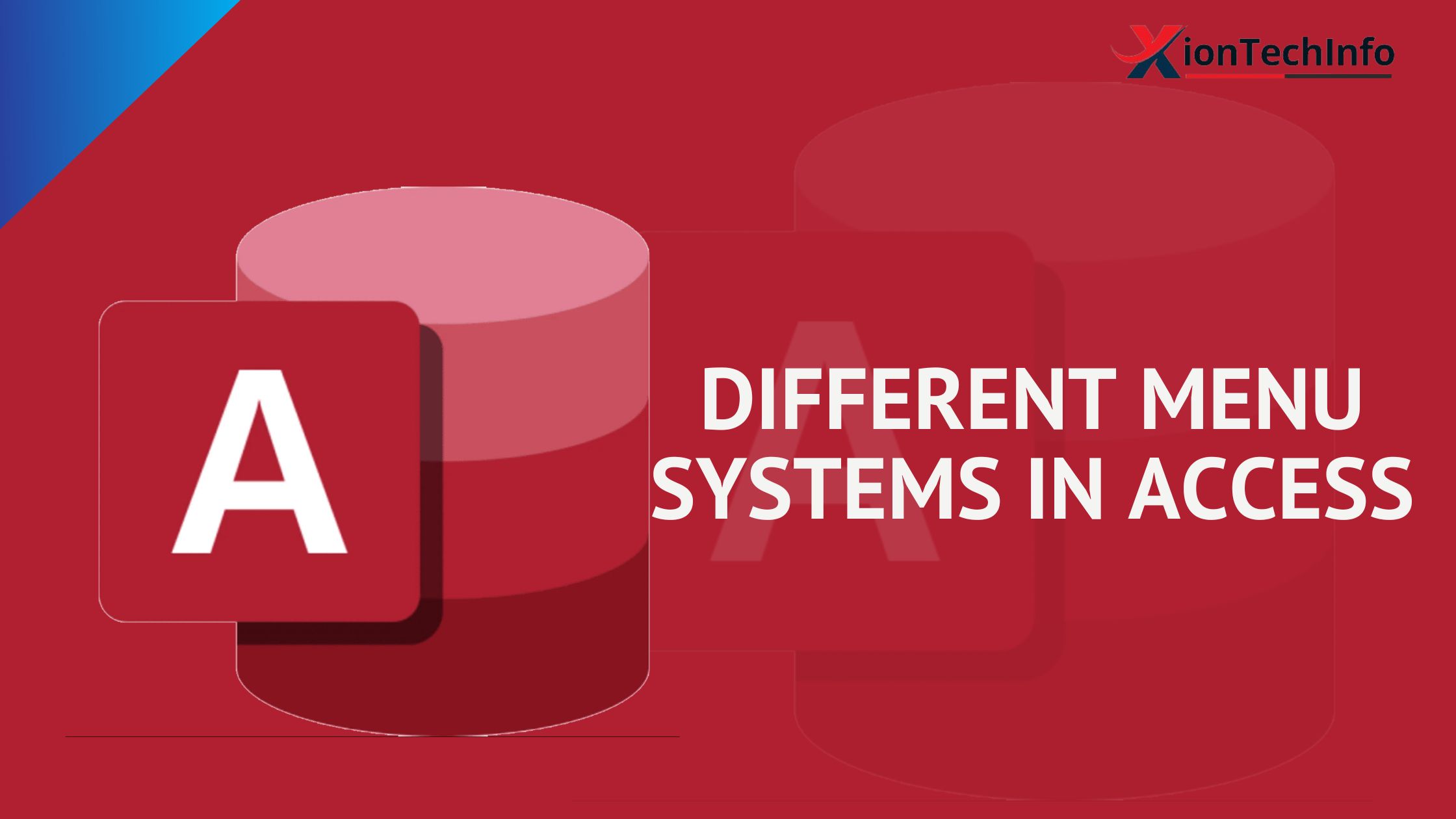Microsoft Access offers a variety of Different Menu Systems in Access designed to simplify database management and enhance user experience. Understanding these menu systems is essential for proficient navigation and efficient utilization of Access’s features.

Table of Contents
Understanding the Ribbon
The ribbon is a prominent feature in Access, providing access to commands and tools organized into tabs, groups, and buttons. Each tab corresponds to a specific activity or task, such as creating tables, forms, or reports. The ribbon’s intuitive layout makes it easy to locate and execute commands efficiently.
Different Menu Systems in Access: Backstage View
The backstage view, accessed by clicking the File tab, offers a centralized location for managing database files and settings. From here, users can create new databases, open existing ones, save files, set options, and perform other file-related tasks. The backstage view streamlines file management tasks, enhancing workflow efficiency.
Navigating the Quick Access Toolbar
The Quick Access Toolbar (QAT) provides quick access to frequently used commands, allowing users to customize the toolbar with their preferred shortcuts. By placing essential commands within easy reach, the QAT accelerates common tasks and boosts productivity.
Utilizing Contextual Menus
Contextual Different Menu Systems in Access, accessed by right-clicking objects within Access, offer a convenient way to access relevant commands and options based on the selected object. These Different Menu Systems in Access provide context-sensitive functionality, allowing users to perform specific actions tailored to the current context.
Accessing Keyboard Shortcuts
Keyboard shortcuts offer an alternative method for executing commands in Access, allowing users to perform tasks quickly without relying on the mouse. Learning commonly used keyboard shortcuts can significantly speed up workflow and minimize repetitive actions.
Customizing the Status Bar
The status bar, located at the bottom of the Access window, provides valuable information and shortcuts for common tasks, such as toggling between different views, adjusting zoom levels, and displaying record counts. Users can customize the status bar to show additional information or hide specific elements based on their preferences.
Mastering Access Options
Different Menu Systems in Access Options allow users to customize various aspects of the Access environment to suit their preferences and workflow requirements. From adjusting display settings to configuring advanced options, mastering Access Options empowers users to tailor the application to their needs.
Working with Add-ins
Add-ins extend the functionality of Access by providing additional features and tools for specific tasks or industries. By installing relevant add-ins, users can enhance their capabilities in areas such as data analysis, reporting, and integration with other applications.
Managing Database Templates
Access offers a range of pre-designed database templates for common tasks and industries, providing a head start for users who need to create databases quickly. Managing database templates involves selecting, customizing, and organizing templates to meet specific project requirements.
Discovering Access Services
Access Services allow users to create and manage web databases hosted on SharePoint sites, enabling collaboration and data sharing across teams. By leveraging Access Services, organizations can develop scalable web-based solutions without the need for extensive development resources.
Collaborating with SharePoint
SharePoint integration enables seamless collaboration between Access and SharePoint, facilitating data sharing, version control, and access management. By publishing Access databases to SharePoint sites, users can centralize data storage and streamline collaborative workflows.
Explaining Macro Security
Macro security in Access helps protect databases from potentially harmful code by controlling the execution of macros and Visual Basic for Applications (VBA) code. Users can adjust macro security settings to balance security with functionality based on their organization’s requirements.
Conclusion
Understanding the different menu systems in Access is essential for maximizing productivity and efficiency when working with databases. By familiarizing themselves with the ribbon, backstage view, quick access toolbar, and other Different Menu Systems in Access features, users can navigate Access with confidence and leverage its full potential for data management and analysis.
FAQ
How can I customize the Quick Access Toolbar in Access?
To customize the Quick Access Toolbar in Access, simply click the down arrow located at the end of the toolbar. From the dropdown menu, select “More Commands.” This will open the Access Options dialog box, where you can add or remove commands from the toolbar. You can choose from a list of popular commands or browse all commands to find the ones you use most frequently. Once you’ve made your selections, click “OK” to apply the changes.
What are contextual menus in Microsoft Access?
Contextual menus, also known as shortcut menus, are menus that appear when you right-click on an object in Microsoft Access. These menus provide quick access to commands and options that are relevant to the selected object. Contextual menus are context-sensitive, meaning they change based on the object you click on and the task you’re performing. They offer a convenient way to perform common actions without having to navigate through the ribbon or menus.
How do I access keyboard shortcuts in Access?
To access keyboard shortcuts in Access, simply press the “Alt” key on your keyboard. This will display a series of letters and numbers on the ribbon and Quick Access Toolbar, indicating the keyboard shortcuts for each command. Pressing the corresponding key will execute the command. Additionally, you can press the “Alt” key followed by the underlined letter in a command’s label to execute the command directly. Learning keyboard shortcuts can help you perform tasks more efficiently and navigate Access more quickly.
